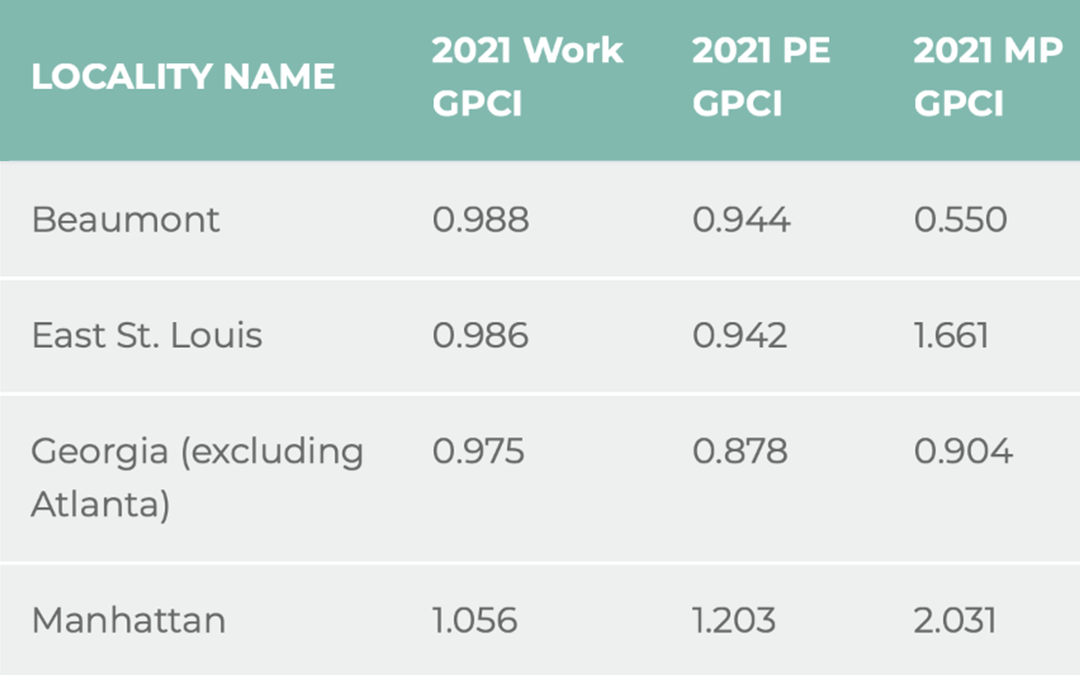RVUs are the basic component of the Resource-Based Relative Value Scale (RBRVS), which is a methodology used by CMS and private payers to determine physician payment. RVUs are not the sole factor that defines physician compensation: the physician payment is determined by a combination of Total RVUs, Geographic Practice Cost Indices, and the annual Conversion Factor.
To accurately capture the consumption of time, effort, and money involved in providing a service to patients, the RBRVS model utilizes three specific components, or types of RVUs, that, when totaled, determine payment. These RVU types measure the following:
- Work RVUs account for the provider’s work when performing a procedure or service. Variables factored into this value include technical skills, physical effort, mental effort and judgement, stress related to patient risk, and the amount of time required to perform the service or procedure. Work RVUs account for 50.866% of the total RVU for a code.
- Practice Expense (PE) RVUs reflect the cost of clinical and nonclinical labor and expenses of the practice. These include medical supplies, office supplies, clinical and administrative staff, and pro rata costs of building space, utilities, medical equipment, and office equipment. Practice expense RVUs account for 44.839% of the total RVU for a given service.
For more information on RVUs, please visit the website of the American Academy of Professional Coders (AAPC): www.aapc.com/practice-management/rvus.aspx

